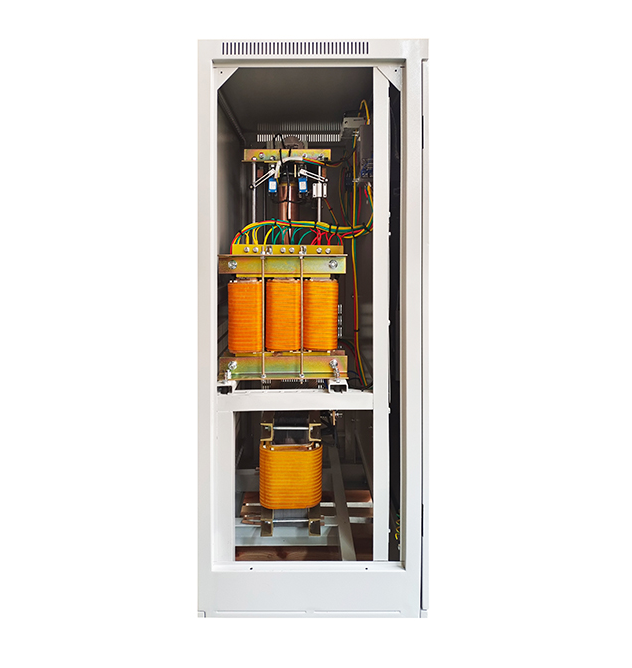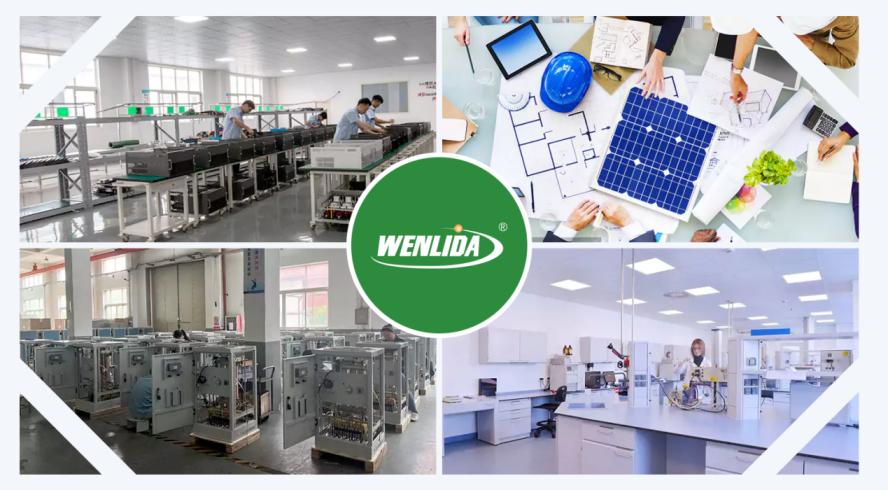How Can Simultaneous Phase Regulating Stabilizers/Regulators Help Ensure Reliable Power Supply in Critical Infrastructure?
In electrical engineering, the Simultaneous Phase Regulating Stabilizer/Regulator is a groundbreaking innovation. Its significance is immense, particularly for maintaining voltage stability and ensuring phase regulation in power systems. This sophisticated device combines the functions of a voltage regulator and a transformer into a single chassis with a modular configuration. This design not only facilitates easy maintenance but also conserves space, reduces costs, and minimizes line loss to improve efficiency. It can withstand instantaneous high voltage, high current, and harsh environmental conditions such as extreme temperatures, humidity, and vibrations. Frequently used in imported equipment, this integrated stabilizer ensures stable voltage accuracy and supports a wide variable voltage range.
Fundamental Principles
At the heart of the Simultaneous Phase Regulating Stabilizer/Regulator lie fundamental principles that dictate its operation. Unlike conventional stabilizers or regulators that address either voltage or phase independently, the Simultaneous Phase Regulating Stabilizer/Regulator excels in simultaneously regulating both parameters. This is achieved through sophisticated control algorithms and sensor feedback mechanisms that continuously monitor and adjust the voltage and phase levels to align with predefined setpoints. By harmonizing these aspects in real-time, the Simultaneous Phase Regulating Stabilizer/Regulator ensures a consistent and reliable power supply, regardless of external variations or load fluctuations.
1.1 Simultaneous Voltage and Phase Regulation
The Simultaneous Phase Regulating Stabilizer/Regulator employs advanced control algorithms to regulate voltage and phase concurrently. By dynamically adjusting transformer tap positions and modulation techniques, it can compensate for voltage fluctuations while synchronously aligning phase angles across the power system. This simultaneous regulation capability is paramount for maintaining grid stability.
1.2 Continuous Monitoring and Feedback
Central to the Simultaneous Phase Regulating Stabilizer/Regulator’s operation is its ability to continuously monitor system parameters and receive feedback from sensors dispersed throughout the power grid. This real-time data acquisition allows the Simultaneous Phase Regulating Stabilizer/Regulator to react swiftly to changes in voltage and phase conditions, preempting potential instabilities and ensuring seamless power transmission.
1.3 Proactive Control Strategies
Simultaneous Phase Regulating Stabilizer/Regulators employ proactive control strategies to anticipate and mitigate voltage and phase deviations before they escalate into critical issues. By analyzing historical data trends and predictive modeling, the Simultaneous Phase Regulating Stabilizer/Regulator can preemptively adjust its settings to maintain optimal system performance under varying operating conditions.
Voltage and Phase Regulation Ranges
2.1 Response Time
The response time of a Simultaneous Phase Regulating Stabilizer/Regulator is crucial for swiftly addressing voltage and phase fluctuations. A faster response time allows the Simultaneous Phase Regulating Stabilizer/Regulator to react promptly to changes in system conditions, minimizing transient disturbances and ensuring rapid stabilization.
2.2 Efficiency
Efficiency is a key consideration in Simultaneous Phase Regulating Stabilizer/Regulator design, as it directly impacts operational costs and energy consumption. High-efficiency Simultaneous Phase Regulating Stabilizer/Regulators minimize losses and maximize the utilization of electrical energy, contributing to overall system reliability and sustainability.
Manufacturer Comparison: Wenlida
3.1 Technical Expertise
Wenlida’s Simultaneous Phase Regulating Stabilizer/Regulators are engineered with precision and expertise, leveraging state-of-the-art control algorithms and sensor technologies to ensure optimal performance and reliability. With a focus on continuous improvement and innovation, Wenlida remains at the forefront of technological advancements in the field of power system stabilization and regulation.
3.2 Product Range
Wenlida offers a comprehensive solution of Simultaneous Phase Regulating Stabilizer/Regulator for your business needs. Whether for utility-scale grid infrastructure or industrial manufacturing facilities, Wenlida’s Simultaneous Phase Regulating Stabilizer/Regulators provide robust and reliable solutions for voltage stability and phase regulation challenges.
3.3 Customer Satisfaction
Wenlida prioritizes customer satisfaction, offering comprehensive technical support, maintenance services, and customization options to meet specific project needs. With a global presence and a reputation for excellence, Wenlida is a trusted partner for power system optimization and reliability enhancement.

Applications of Simultaneous Phase Regulating Stabilizer/Regulator
Simultaneous Phase Regulating Stabilizer/Regulator technology finds extensive applications across various industries, offering versatile solutions for optimizing power system performance and reliability.
4.1 Manufacturing Industry
In the manufacturing sector, where uninterrupted power supply is critical for production processes, it plays a vital role in maintaining voltage stability and phase regulation. These devices ensure consistent power quality, preventing voltage sags and surges that could disrupt sensitive equipment such as CNC machines, robotics, and industrial control systems. By stabilizing voltage and regulating phase angles, Simultaneous Phase Regulating Stabilizer/Regulator helps minimize downtime and enhance productivity in manufacturing facilities.
4.2 Utilities
Utilities rely on Simultaneous Phase Regulating Stabilizer/Regulator technology to ensure grid stability and reliability in the face of fluctuating demand and unpredictable environmental conditions. It enables utilities to maintain voltage within optimal operating ranges, thereby improving power quality and reducing the risk of equipment damage. Additionally, Simultaneous Phase Regulating Stabilizer/Regulator facilitates the seamless integration of renewable energy sources into the grid by mitigating voltage fluctuations and phase mismatches associated with intermittent generation.
4.3 Renewable Energy
The proliferation of renewable energy sources, such as solar and wind power, presents unique challenges for grid operators due to their variable nature. Simultaneous Phase Regulating Stabilizer/Regulator play a crucial role in smoothing out the fluctuations in voltage and phase angle caused by intermittent renewable generation, ensuring seamless integration into the grid. By providing grid stability and voltage regulation, Simultaneous Phase Regulating Stabilizer/Regulator enable utilities to maximize the utilization of renewable energy resources while maintaining system reliability.
Specific Examples of Simultaneous Phase Regulating Stabilizer/Regulator Applications
5.1 Industrial Parks
In industrial parks with diverse manufacturing operations, it is deployed to regulate voltage and phase angles across interconnected facilities. By maintaining uniform power quality throughout the park, Simultaneous Phase Regulating Stabilizer/Regulator enables efficient operation of industrial equipment and prevents disruptions that could impact production schedules.
5.2 Data Centers
Data centers, which demand a highly reliable power supply to ensure continuous operation of critical IT infrastructure, rely on Simultaneous Phase Regulating Stabilizer/Regulator technology for voltage stabilization and phase regulation. Simultaneous Phase Regulating Stabilizer/Regulator protects sensitive electronic equipment from voltage fluctuations and harmonic distortion, minimizing the risk of downtime and data loss.
5.3 Smart Grid Integration
In the context of smart grid systems, It plays a pivotal role in enhancing grid resilience and flexibility. By incorporating advanced control algorithms and communication capabilities, Simultaneous Phase Regulating Stabilizer/Regulator enables dynamic voltage and phase regulation to support the integration of distributed energy resources and demand-side management initiatives.
Advantages and Limitations
6.1 Advantages
Simultaneous Phase Regulating Stabilizer/Regulator offer numerous advantages, including improved power quality, reduced downtime, and increased system reliability. By stabilizing voltage and regulating phase angles, it prevents voltage fluctuations and phase mismatches that could damage sensitive equipment and disrupt operations. Additionally, it help utilities optimize grid performance, minimize energy losses, and enhance overall system efficiency.
6.2 Limitations
Despite their benefits, they may face challenges related to cost and complexity. The initial investment required for deploying it technology can be significant, particularly for large-scale applications. Additionally, integrating it into existing power systems may require specialized expertise and careful coordination to ensure compatibility and seamless operation.
Future Trends and Innovations
7.1 Advanced Control Algorithms
Future developments in it technology are expected to focus on enhancing control algorithms to enable more precise and efficient voltage and phase regulation. By leveraging artificial intelligence and machine learning techniques, it can adaptively respond to dynamic system conditions and optimize performance in real-time.
7.2 Integration with Smart Grid Systems
It will continue to evolve as integral components of smart grid systems, enabling seamless integration of renewable energy sources, energy storage systems, and electric vehicle charging infrastructure. Enhanced communication capabilities will enable Simultaneous Phase Regulating Stabilizer/Regulator to participate in grid-wide coordination and optimization efforts, contributing to a more resilient and sustainable energy ecosystem.
7.3 Enhanced Communication Capabilities
Future it will feature enhanced communication capabilities, enabling seamless integration with advanced monitoring and control systems. By facilitating real-time data exchange and remote monitoring, these capabilities will enable utilities to optimize grid operations, identify potential issues proactively, and respond swiftly to changing system conditions.

Conclusion
In conclusion, the it represents a paradigm shift in power system stabilization and regulation. By integrating advanced control algorithms, sensor technologies, and proactive control strategies, itoffers unparalleled performance and reliability in maintaining voltage stability and phase regulation. As manufacturers like Wenlida continue to push the boundaries of innovation, the future holds exciting prospects for further advancements in Simultaneous Phase Regulating Stabilizer/Regulator technology, paving the way for a more resilient and sustainable electrical grid.
